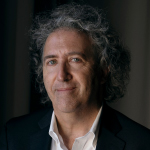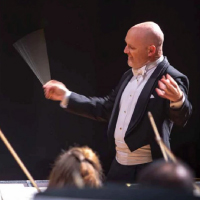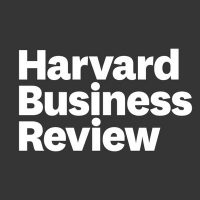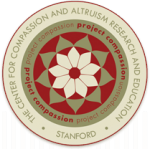Search Results for: blog
All Posts in Scientific American
All Posts in Psychology Today
All Posts in Patron Commitee
All Posts in Non-CCARE Event
All Posts in Fellows
All Posts in Executive Committee
All Posts in Conversations on Compassion
All Posts in Contra Costa Times
All posts in Conferences/Events
All posts in Collaborators
All posts in CCARE
All posts in Advisory Board
All posts in The Huffington Post
5 Surprising Reasons Compassion is a Competitive Advantage

Written by Monica C. Worline and Jane E. Dutton.
Recently, as Monica’s beloved Bernese Mountain Dog was living her final days, Monica had planned a hotel stay near a specialty veterinary treatment center. On the eve of her arrival, she received news that the tumor was not treatable. She called the hotel’s booking service to cancel the reservation.
“I see that you are subject to a 100% cancellation charge at this time,” the agent said.
“That’s ok, I understand,” Monica answered. “I just wanted you to know that I won’t be checking in.”
“Would you be willing to share why you are cancelling this reservation?” the agent asked.
“I was going to take my dog for treatment at a specialty hospital near the hotel, but…
Inadvertently, tears welled up. The agent, instead of ignoring this, responded quickly with words of comfort. She offered to contact the hotel on Monica’s behalf. Shortly after the call, Monica received an email from the reservation agent, who had negotiated with the hotel to waive the penalty fees and cancel the reservation with no charge. She also acknowledged the sadness of losing a pet. She finished her note with a personal touch: “I am glad to have helped. I am so sorry for what you are going through.”
To read the entire blog post, click here.
Letting Happiness Flourish in the Classroom
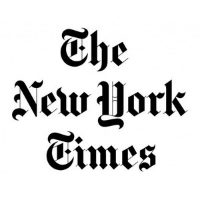
Written by Jessica Lahey.
When I look out into my classroom, and take the emotional temperature of my students, I’m usually checking for engagement. I want to make sure they feel supported, are interested in the lesson at hand, and that the lesson is relevant to each student.
But happiness? I stopped looking for happiness long ago. I see it periodically, when the conditions are perfect, and the stars align just so. When happiness strikes in my classroom, I relish it as I would any other rare anomaly, like thundersnow or a two-faced calf. Regular sightings, however, seem too much to hope for given the inhospitable climate in many American classrooms.
Emma Seppala, however, the author of “The Happiness Track,” and science director of Stanford University’s Center for Compassion and Altruism Research and Education, has not lost hope. Dr. Seppala admits that yes, happiness can be a rare beast in our classrooms, but we can create and protect learning conditions in which happiness can flourish.
To read the full article, click here.
Jumping on the “Happiness Track” with Author and Stanford Psychologist Emma Seppälä

Written by Holly MacCormick.
Many people think that hard work is the key to success and happiness, yet we all know it’s not possible to work, and work well, 24/7. This realization hit me as I was preparing to interview Emma Seppälä, PhD, associate director of Stanford’s Center for Compassion and Altruism Research and Education, about her new book, The Happiness Track. In it, Seppälä highlights research on the complex relationship between work and happiness and outlines how we can apply these findings to our daily lives to boost our productivity and resilience, reduce stress and enjoy sustainable success and happiness.
I couldn’t wait to read the book, but I seldom allow myself time for such an indulgence – so I bought the audiobook and planned to listen to it during my commute to work. After about 30 minutes of listening, the book’s focus shifted to multitasking. Doing an activity like listening to a book while driving, the narrator said, may seem like a great way to get a lot done, but it’s counterproductive because the listener is neither fully paying attention to the book or their driving.
To read the full article, click here.
San Antonio Book Festival Releases Lineup of More Than 85 Authors for 4th Annual Book Festival
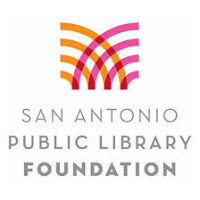
The San Antonio Book Festival (SABF) has released their list of more than 85 acclaimed national, regional and local authors who will appear at the 4th annual festival.
SABF is a free, daylong, family-friendly event that draws thousands for author presentations, panel discussions, book sales and signings, recipe demonstrations, children’s and teen activities and food trucks. The Festival will take place on Saturday, April 2 from 10 am to 5 pm at the Central Library and Southwest School of Art. A full schedule of events will be available at saplf.org/festival in March.
Top attractions this year include Stephen Harrigan (The Gates of the Alamo), with his latest historical novel A Friend of Mr. Lincoln; Skip Hollandsworth with his new true crime account, The Midnight Assassin: Panic, Scandal, and the Hunt for America’s First Serial Killer; actress Sonia Manzano of Sesame Street fame with her memoir Becoming Maria: Love and Chaos in the South Bronx; award-winning journalist Rebecca Traister with her highly anticipated book, All the Single Ladies: Unmarried Women and the Rise of an Independent Nation; and George Hodgman with his memoir Bettyville, which received a National Book Critics Circle nomination and was included in NPR critic Maureen Corrigan’s Best Books of 2015.
To read the full article, click here.
Into the Magic Shop: Stanford Neurosurgeon Jim Doty’s Captivating Memoir

Doty has written an unusual memoir – Into the Magic Shop – detailing his life’s journey. In this 1:2:1 podcast I spoke with him about this most uncommon life – one of potholes and promise, detours and dreams, redemption and revisions, and, yes, contentment and even possibly peace.
To listen to the interview, click here.
Why Kindness Heals

As a physician specializing in neurosurgery at an academic medical center, I appreciate the unhappiness many patients have with the present healthcare delivery system that is rushed, bureaucratic, non-caring and technology-focused. In the U.S. we spend more per capita than any other industrialized country, yet the outcomes are some of the worst in the world, with the highest levels of patient dissatisfaction.
What is the solution? Francis W. Peabody, M.D. said in 1925 that, “the secret of the care of the patient is caring for the patient.” These words are even more true today and are now backed by an ever enlarging body of science that demonstrates that kindness, compassion and empathy have a profound effect on healing. This new body of evidence spanning psychology, neuroscience, and even economics reveals that as a species our default mode is not one of self-centeredness but that we are wired to connect and when we connect our physiology improves for the better. For example, a study that subjected volunteers to the common cold virus on purpose as part of the experiment found that when those volunteers rated the doctor who interacted with them as very kind, they were less likely to develop a full-blown cold, their symptoms were less severe, and the illness cleared up faster.
To read the entire blog post, click here.
Real Magic

The day I noticed my thumb was missing began like any other day the summer before I started eighth grade. I spent my days riding my bicycle around town, even though sometimes it was so hot the metal on my handlebars felt like a stove top. I could always taste the dust in my mouth—gritty and weedy like the rabbit brush and cacti that battled the desert sun and heat to survive. My family had little money, and I was often hungry. I didn’t like being hungry. I didn’t like being poor.
Lancaster’s greatest claim to fame was Chuck Yeager breaking the sound barrier at nearby Edwards Air Force Base some twenty years earlier. All day long planes would fly overhead, training pilots and testing aircraft. I wondered what it would be like to be Chuck Yeager flying the Bell X-1 at Mach 1, accomplishing what no human had ever done before. How small and desolate Lancaster must have looked to him from forty five thousand feet up going faster than anyone ever thought possible. It seemed small and desolate to me, and my feet were only a foot above the ground as I pedaled around on my bike.
I had noticed my thumb missing that morning. I kept a wooden box under my bed that had all my most prized possessions. A small notebook that held my doodles, some secret poetry, and random crazy facts I had learned—like twenty banks are robbed every day in the world, snails can sleep for three years, and it’s illegal to give a monkey a cigarette in Indiana. The box also held a worn copy of Dale Carnegie’s How to Win Friends and Influence People, dog-eared on the pages that listed the six ways to get people to like you. I could recite the six things from memory.
To read the entire blog post, click here.
Thinking About Thinking

“Do you know what a mantra is, Jim?”
I shook my head. I didn’t have a clue.
“It’s kind of like a song or a sound you make that helps you focus your mind. Just like you’ve been focusing your mind on your breathing or the candle, this is another way to trick your mind.”
I looked at her again and noticed she was wearing a necklace with a whistle and a bell. Is that what she was talking about? At that moment she leaned forward toward me and the bell made a little tinkle. I almost started laughing. She looked down at it and laughed. “No, that’s not what I’m talking about.”
“What kind of sound?” I had a feeling this was going to be weird.
“Well, it depends. People sometimes say a word that is important to them or a phrase that has some magical meaning. But it can be anything. The words don’t really matter; it’s the sound that matters.”
To read the entire blog post, click here.
Explaining the ‘Empathy Gap’ in Our Reactions to Paris and Beirut

Written by Carolyn Gregoire.
After a coordinated series of horrific terrorist attacks in Paris left at least 129 people dead and 352 wounded on Friday, the world joined together in collective grief and mourning.
The attacks — the deadliest in France since World War II — inspired a massive global outpouring of sadness, anger and solidarity. On the Internet, Facebook launched French flag overlays for users’ profile pictures and safety checks for individuals in Paris, while hashtags like #PrayforParis and #StayStrongParis spread like wildfire across social media. Meanwhile, candlelit vigils took place around the world and international monuments from the Empire State Building to the London Eye to the Tokyo Tower lit up in red, white and blue.
It wasn’t long before global citizens began calling for another prayer — not just for Paris, but for the world. As Delhi blogger Karuna Ezara wrote in a viral Instagram post, “It is a world in which Beirut, reeling from bombings just two days before Paris, is not covered in the press. A world in which a bomb goes off at a funeral in Baghdad and not one person’s status update says ‘Baghdad.’”
Lebanese doctor Elie Fares wrote in his blog, “When my people died, no country bothered to light up its landmarks in the colors of their flag.”
They’re right. Looking at the average Facebook feed or news site, most people would have no idea that a similar tragedy, also committed at the hands of the Islamic State, occurred just one day before — but this time in Beirut, killing over 40 people and injuring more than 239. Even less attention was paid to the bombing of a funeral in Baghdad on Friday, killing 18 people.
In the wake of horrific acts of terrorism, the people of Lebanon found themselves asking: Where’s our flag? Where’s our Facebook safety check? Where’s our solidarity?
Many commentators have spoken out about the discrepancy in international responses, citing racism and Western bias.
Yes, this is bias. “Most people in the U.S. can’t even locate Lebanon on a map,” notes Stanford University psychologist Emma Seppälä, who is science director of Stanford’s Center for Compassion and Altruism Research and Education.
But where does this bias come from? Psychology can shed some light on how we can display compassion for one global crisis, and barely notice another.
To read the full article, click here.
Searching for Characters
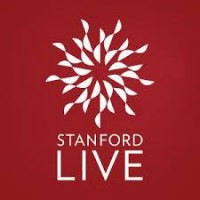
Written by Alisa Solomon.
When Anna Deavere Smith was awarded a National Humanities Medal in 2012 by President Obama, the citation lauded how “she has informed our understanding of social issues” by conveying “a range of disparate characters.” Through her sustained project “On the Road: A Search for American Character,” which she began in the early 1980s, Smith has indeed invented a unique and powerful form of documentary theater that shines light on pressing contemporary issues. Inspired by Smith’s groundbreaking artistry, Stanford Live’s series Live Context: Art + Ideas and the Office for Religious Life are presenting works that explore the role art can play in promoting social change.
Smith builds her plays by interviewing a diverse group of people who all have some stake in a particular event or issue, and then she culls rich monologues from what she calls the “organic poetry” in their expression. She performs these verbatim texts with complete fidelity to the rhythms and patterns of each person’s speech and gestures. As a result, through the medium of her body, onstage Smith brings into dialogue people who would otherwise never occupy the same space. A Lubavitcher housewife, a Nation of Islam minister, an Orthodox rabbi, and a young rapper, for instance, are just four of some 26 characters Smith personified in Fires in the Mirror: Crown Heights, Brooklyn, and Other Identities, the 1992 work that dug into the heart of the violent clashes between that neighborhood’s Hasidic and Caribbean American communities and that catapulted Smith to international acclaim. With this same technique, Smith’sTwilight: Los Angeles, 1992 illuminated the causes and effects of the riots that followed the verdict in the Rodney King beating case. (The searing PBS version will be screened at Cubberley Auditorium on October 14, followed by a Q&A with Smith.) House Arrest examined the American presidency and its public image. Let Me Down Easyexplored illness and mortality within the context of a broken health-care system.
Smith also performs (or directs other actors in) works made from archival texts she has selected that still speak to the current moment—to America’s persistent inequities and to its enduring promise—and that respond to the same concerns that animate her interview-based plays: racial and economic justice, American identity on individual and national scales, triumphs and failures of empathy, the struggles folks face and the ways they rise to meet them. (These are also the themes she will take up in a dialogue on compassion at Stanford’s Center for Compassion and Altruism Research and Education on October 7.) Rap on Race juxtaposed Mike Wallace’s 1959 interview of Lorraine Hansberry with James Baldwin’s legendary 1971 conversation with Margaret Mead. Smith’s recitation of Dr. Martin Luther King Jr.’s iconic “Letter from a Birmingham Jail”—which she will present at Memorial Church on October 21—reanimates his defense of taking to the streets for the cause of justice as a rousing summons for right now.
To read the full article, click here.
Dr. James Doty, Founder of CCARE, Releases Book
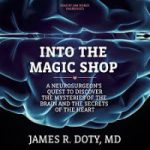
In Into the Magic Shop: A Neurosurgeon’s Quest to Discover the Mysteries of the Brain and the Secrets of the Heart, Dr. James Doty, neurosurgeon and professor at Stanford School of Medicine and Director of Stanford’s Center for Compassion and Altruism Research and Education has written a moving account – part auto-biographical narrative, part popular psychology – that illuminates the power of compassion to change lives and heal hearts.
No stranger to suffering, Doty was raised in abject poverty and neglect, the son of an invalid mother and alcoholic father. Had it not been for the kindness of a stranger – a woman in a magic shop – who taught him meditation at a young age, he would have succumbed to hopelessness. Instead, he rose above his fears and insecurities, developed resilience and excelled. Attending college and then medical school, Doty landed highly coveted and prestigious neurosurgery positions.
Forever touched by the kindness of the woman in the magic shop, Doty – who overcame a series of personal struggles even as an adult – understands the powerful impact that compassion can have – for his patients, his colleagues and all those with whom he comes into contact. Doty has made large philanthropic gifts, at times giving away all he had.
The Dalai Lama – which whom Doty maintains a close friendship – inspired Doty to found Stanford’s Center for Compassion and Altruism Research and Education. Through his work as a neurosurgeon, compassion scientist and researcher, Huffington Post blogger and acclaimed international speaker, Doty has touched the lives of thousands of people. Into the Magic Shop is an intimate account of Doty’s profound and moving insights derived from struggle. Along with profound wisdom, readers learn practical tools for how to increase their compassion and live a life of meaning and purpose.
Pre-sold and translated into dozens of languages already, Into the Magic Shop is now available for pre-order on Amazon here.


